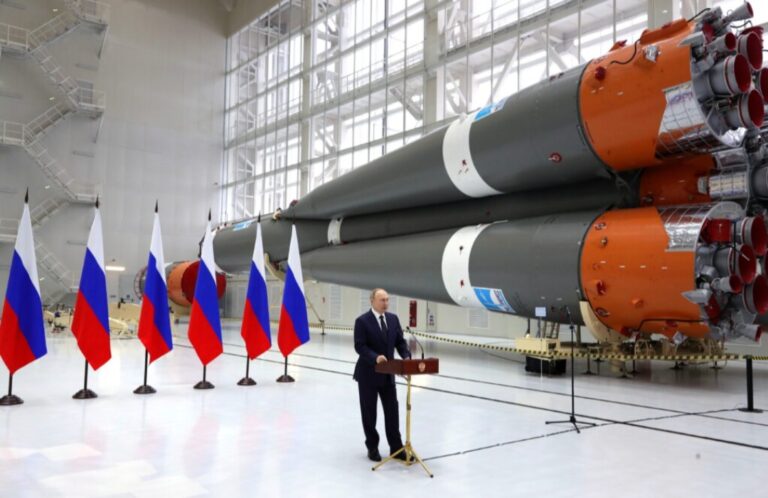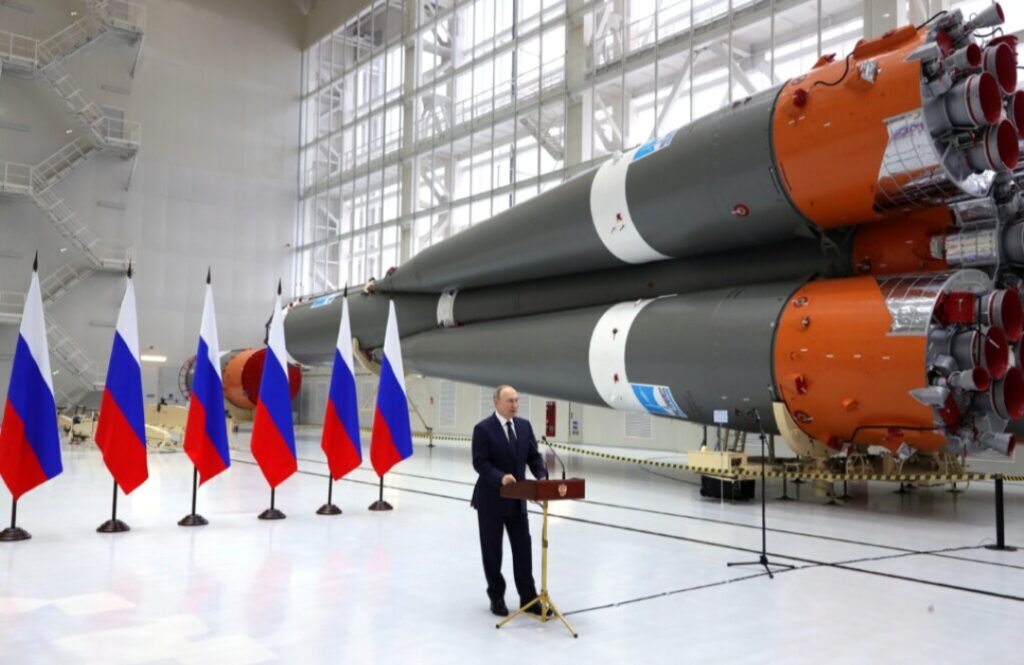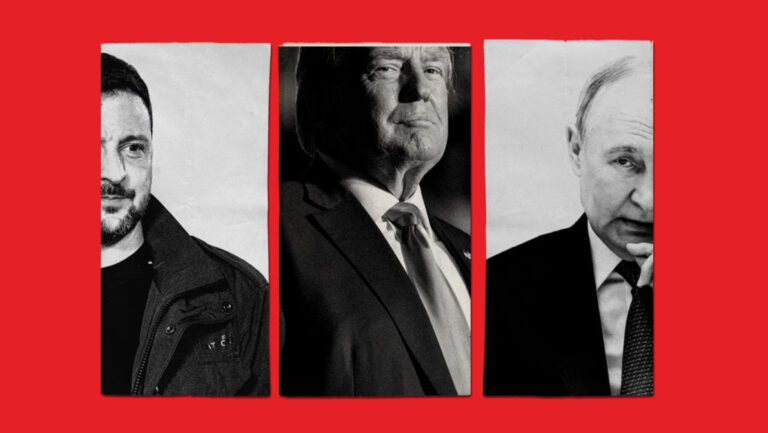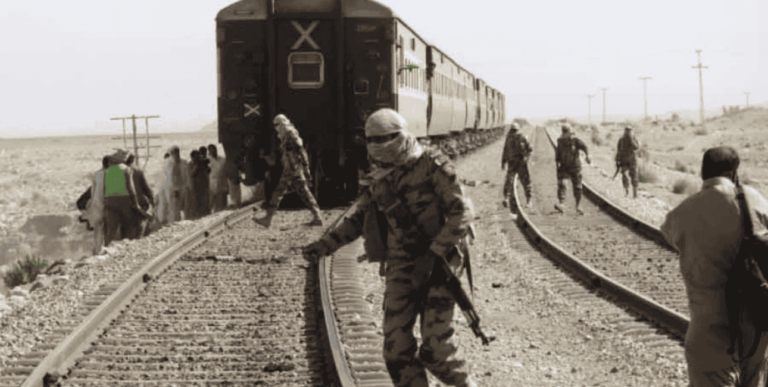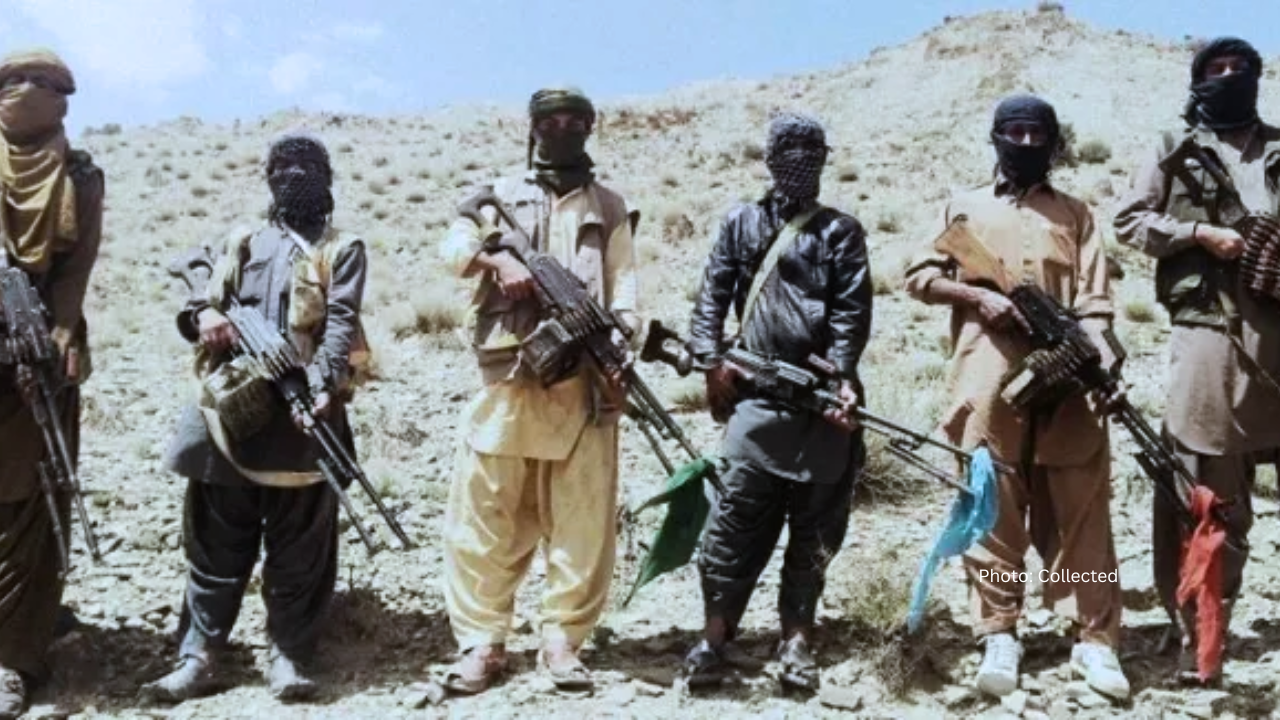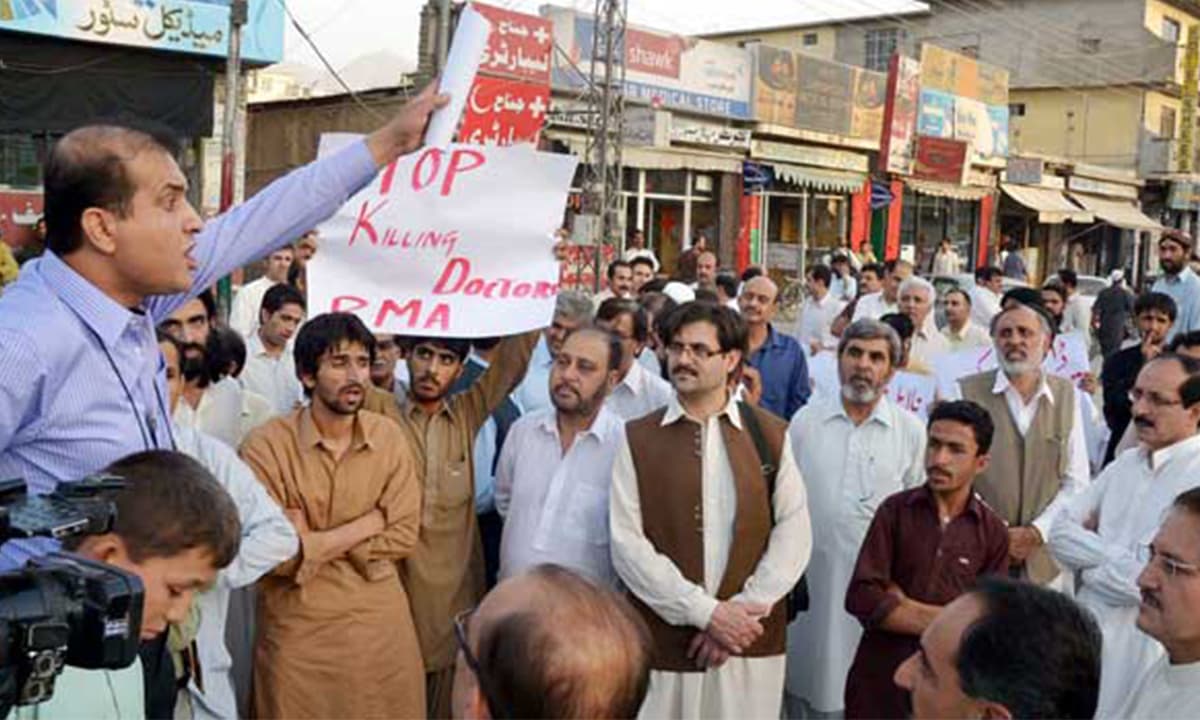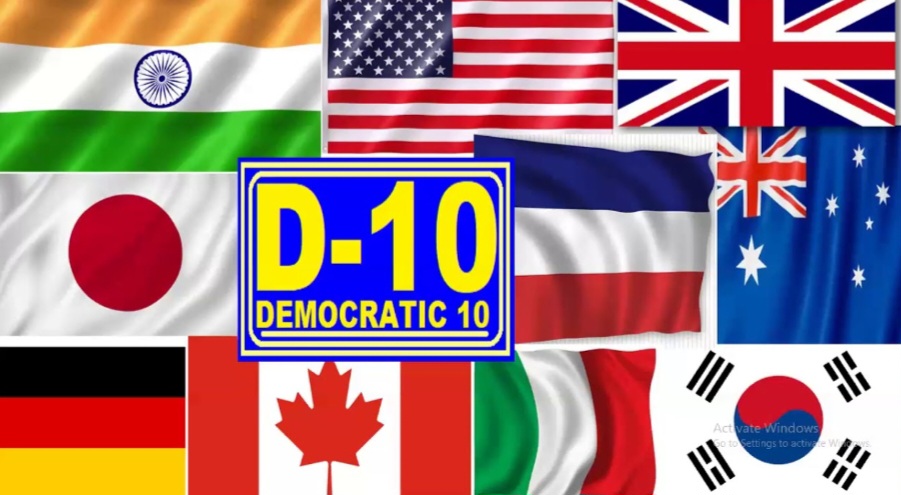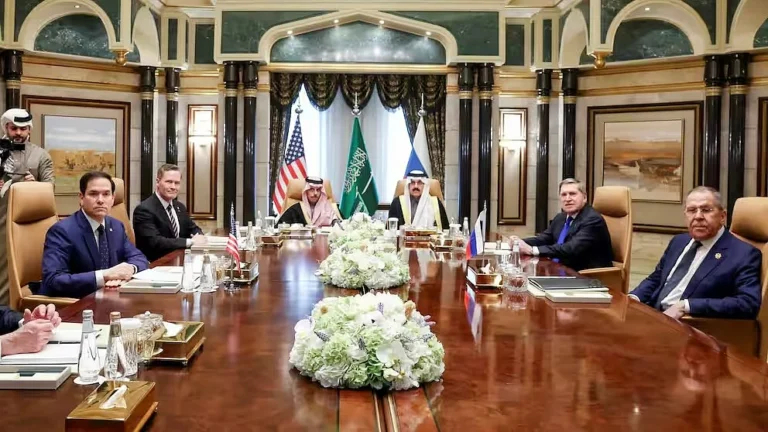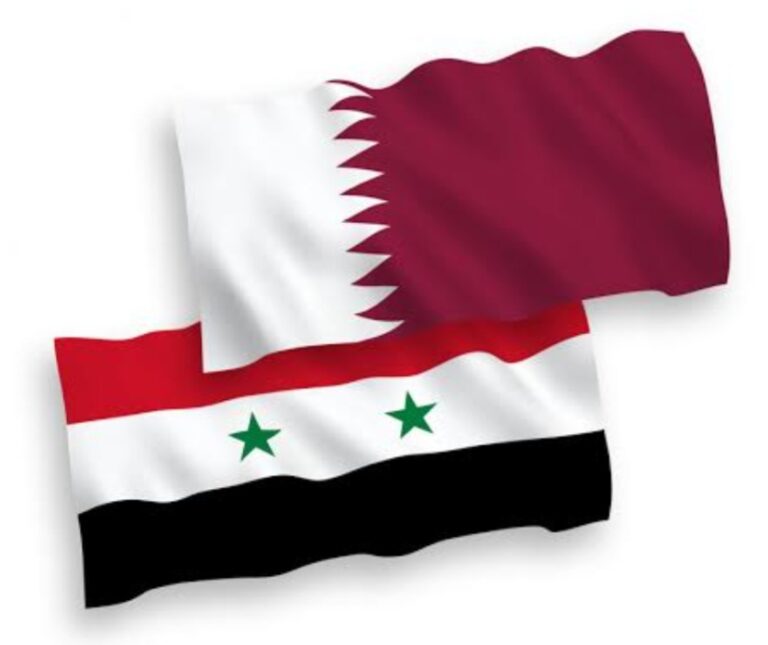Russian President Vladimir Putin made an unannounced visit to the occupied Kursk region on Wednesday, a move that shows Moscow’s growing confidence as its forces close in on Ukraine’s last strategic bargaining chip. The visit comes as the Kremlin weighs a US-backed 30-day ceasefire proposal amid rapid Russian advances on the battlefield.
Dressed in military fatigues in footage aired by Russian state television, Putin addressed frontline troops, reiterating Moscow’s goal of achieving the “complete liberation” of Kursk. This marks his first trip to the western Russian region since Ukraine’s surprise incursion there last year, a campaign that initially caught Moscow off guard but has since crumbled under sustained Russian pressure.
Ceasefire Talks Hang in the Balance
Putin’s highly choreographed appearance appeared aimed at rallying morale among Russian forces, who have reportedly reclaimed most of the territory seized by Ukrainian troops in August. The visit also coincided with fresh diplomatic efforts from Washington, as US President Donald Trump confirmed on Wednesday that US representatives were en route to Russia to discuss the ceasefire deal.
Kremlin spokesperson Dmitry Peskov later told reporters that Putin was “carefully studying” the US proposal and would await a formal briefing from American officials in the coming days.
Moscow’s Gains and Ukraine’s Retreat
Meanwhile, Russian forces appear to be tightening their grip on Kursk, further diminishing Ukraine’s negotiating leverage. Russian General Valery Gerasimov, meeting with Putin during the visit, claimed that Russian forces had already recaptured 86% of the territory taken by Ukraine and had surrounded the remaining holdouts. He also stated that 430 Ukrainian soldiers had been captured, while others were either retreating or encircled.
Kyiv’s ambitions of using Kursk as a bargaining chip in future peace talks had “totally collapsed,” Gerasimov declared.
For Ukraine, the situation is growing more precarious. On Wednesday, Ukraine’s top general Oleksandr Syrskyi acknowledged that Ukrainian forces had been pushed out of multiple settlements in the region, calling the withdrawals “tactical retreats” to “more favorable positions.” Syrskyi also revealed that Russian airstrikes had devastated parts of Kursk, with the town of Sudzha “almost completely destroyed” by Russian bombardment.

Russia’s Next Steps and US Diplomatic Efforts
During his visit, Putin not only called for the remaining Ukrainian troops in Kursk to be expelled but also floated the idea of establishing a “buffer zone” along the Russia-Ukraine border, potentially signaling Moscow’s intent to push deeper into Ukrainian territory.
His remarks come as the Kremlin signals that the final phase of the operation is underway. Peskov told state media outlet TASS on Thursday that Russian forces were in the “endgame” of clearing Ukrainian forces from the region.
With negotiations in flux, US officials are scrambling to keep diplomatic channels open.
Trump’s Special Middle East envoy, Steve Witkoff, is set to visit Russia later this week, though it remains unclear whether he will meet with Putin. Meanwhile, Vice President JD Vance acknowledged ongoing discussions, noting that talks were taking place “on the phone and in person with some of our representatives over the next couple of days.”
Putin Eyes Buffer Zone in Sumy as Russia Tightens Grip on Kursk
Speaking to Russian troops during his visit to the recently recaptured areas, Putin emphasized the need to restore security along the border, describing the situation as one requiring immediate action.
“The situation along the state border must be restored,” Putin said, calling for a swift and decisive operation to neutralize the remaining Ukrainian forces still fighting in Kursk. “Our task in the near future, in the shortest possible timeframe, is to decisively defeat the enemy entrenched in the Kursk region.”
The comments signal that Moscow is not merely aiming to reclaim lost territory but is also considering expanding its military presence deeper into Ukrainian land, a move that could further escalate the conflict.
Russia’s Rapid Gains in Kursk
Putin’s visit came as Russian forces celebrated their most significant gains in months.
One of the most notable victories was the recapture of Sudzha, a strategically important town near the Ukrainian border. Russian state media and military bloggers published images of Russian soldiers raising the country’s tricolor flag in the town square, confirming Moscow’s control over the area.
Ukraine’s Stubborn Resistance
Despite these setbacks, Ukraine has vowed to continue fighting in Kursk for as long as necessary. While Deep State, a Ukrainian conflict-tracking outlet, acknowledged that Kyiv’s forces no longer controlled Sudzha, reports of continued clashes on the town’s outskirts suggest that Ukraine is not giving up without a fight.
Ukraine’s top military commander described the battle for Sudzha as “intense,” while a Ukrainian military blogger known as Skadovskyi Defender confirmed that Ukrainian troops were withdrawing from Kursk but promised that heavy strikes on Sudzha would continue.
This suggests that Ukraine may shift toward a strategy of sustained aerial and artillery attacks, rather than attempting to hold ground against the advancing Russian forces.
Putin’s Stance on Captured Ukrainian Fighters
In a notable escalation of rhetoric, Putin declared that foreign fighters captured in Kursk while fighting for Ukraine would not be entitled to Geneva Convention protections. He also labeled Ukrainian soldiers captured in the region as “terrorists.”
This statement raises serious concerns over the treatment of prisoners of war (POWs) and signals Moscow’s hardline approach toward those fighting against Russian forces.
Trump Warns Putin of ‘Very Bad’ Consequences
Meanwhile, amid renewed diplomatic efforts to halt the Russia-Ukraine war, US President Donald Trump has issued a strong warning to Vladimir Putin, cautioning against rejecting a proposed ceasefire agreement. Trump suggested that while his priority was peace, he was prepared to take severe financial measures if Russia refused to comply.
“I can do things financially that would be very bad for Russia. I don’t want to do that because I want to get peace,” Trump told reporters in the Oval Office. He confirmed that US officials were set to visit Russia to discuss the possibility of a 30-day ceasefire and broader peace talks.
The push for negotiations follows extensive discussions in Saudi Arabia, where Ukraine reportedly agreed to a temporary truce, placing the decision in Moscow’s hands. Trump remained cautiously optimistic, stating, “Hopefully, we can get a ceasefire from Russia.”
Washington Seeks Unconditional Russian Compliance
While Trump hinted at diplomatic maneuvering, US Secretary of State Marco Rubio took a harder stance, insisting that Russia must accept the ceasefire without conditions.
“If their response is ‘yes,’ we know we’ve made real progress. If it’s ‘no,’ then their intentions are clear,” Rubio said while en route to a G7 meeting in Canada.
Meanwhile, in a rare development, the CIA and Russia’s SVR foreign intelligence service held their first direct communication in years. At the same time, defense ministers from France, Britain, Germany, Italy, and Poland convened in Paris to discuss continued military and economic support for Ukraine and the ceasefire proposal.

Russia Holds Its Ground, Ukraine Remains Skeptical
Despite growing international pressure, Russia has yet to issue an official response. However, Moscow’s foreign ministry previously dismissed the idea of a temporary ceasefire, arguing that it would merely allow Ukraine to regroup militarily.
Putin, who recently visited troops in the strategic Kursk region, reiterated that Russia remains committed to achieving its military objectives. “All combat tasks will be fulfilled,” he assured Russian forces.
Ukrainian President Volodymyr Zelensky, meanwhile, voiced doubts about Russia’s sincerity, suggesting that Moscow has no real intention of ending the war. Speaking to AFP, he remarked, “Everything depends on whether Russia wants peace or to continue killing people.”
Escalating Hostilities. Ukraine Faces Pressure
The diplomatic uncertainty comes as Ukraine faces mounting battlefield setbacks. Russian advances in the east and south have forced Ukrainian troops to retreat from several key positions.
In a show of military strength, Moscow reported that its forces had shot down 77 Ukrainian drones, just days after Kyiv launched its largest-ever drone attack on Moscow in the war’s three-year history.
Meanwhile, Ukrainian cities, including Kyiv and Kherson, suffered fresh Russian strikes, with reports of multiple casualties.
The Last Bit
With the ceasefire proposal now in Moscow’s hands, the next few days will determine whether diplomacy can achieve a breakthrough or if the war will continue unabated.
If Russia refuses, Trump has hinted at economic retaliation, potentially signaling a shift toward a more aggressive financial strategy against Moscow.
For now, the world watches as the delicate balance between war and diplomacy plays out.


)
